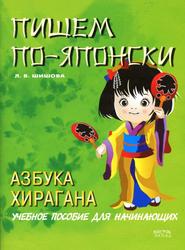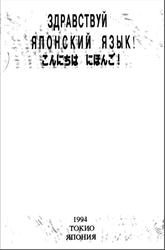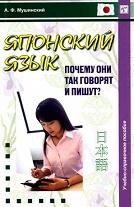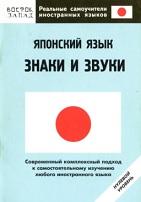This book is one of a new series of handy grammar reference guides designed for students, businesspeople, and others who want to improve their knowledge of Japanese grammar. It enables you to reflect on what you already know, to reinforce your skills, and to fill in the gaps.
Whether you are just beginning your study of Japanese or have some basic Japanese and want to refresh your memory, this book is for you. Previous knowledge has not been taken for granted; definitions and explanations are simple and concise, and examples use and reuse a core of basic vocabulary.

KANJI.
Chinese and Japanese are completely different languages. But beginning in the fourth or fifth century, Japanese adopted written symbols and many vocabulary items from Chinese. In Japan, these symbols or Chinese characters are called kanji. They represent both meaning and sound, and often one kanji has more than one pronunciation (or reading, as it's commonly called) and meaning.
Japanese people learn about 2,000 kanji by the end of junior high school. Those are the basic characters used in newspapers, magazines, and school textbooks. Most Japanese know several thousand additional kanji as well.
Contents.
Preface.
How to Use This Book.
The Basics.
1. PRONUNCIATION GUIDE.
1.1 What Are Vowels and Consonants?.
1.2 Vowels.
1.3 Consonants.
2. THE JAPANESE WRITING SYSTEM.
2.1 Direction and Characters.
2.2 Kanji.
2.3 Hiragana and Katakana.
2.4 Romaji.
3. WORD ORDER.
3.1 What Is a Sentence?.
3.2 The English Sentence.
3.3 The Japanese Sentence.
3.3-1 Subject-Object-Verb Sentences.
3.3-2 Subject and Predicate.
3.3-3 Incomplete Sentences.
Parts of Speech.
4. NOUNS.
4.1 What Are Nouns?.
4.2 Gender.
4.3 Articles.
4.4 Number.
4.5 Names.
4.6 Titles.
4.7 Politeness.
4.8 Compound Nouns.
4.9 Noun Suffixes.
5. PRONOUNS.
5.1 What Are Pronouns?.
5.2 Personal Pronouns.
5.2-1 Special Usage.
5.2-2 Case.
5.3 Interrogative Pronouns.
5.4 Indefinite Pronouns.
5.5 Demonstrative Pronouns.
5.6 Relative Pronouns.
5.7 Reflexive Pronouns.
6. PARTICLES.
6.1 What Are Particles?.
6.2 Particles Used with Words or Phrases.
6.3 Particles Used with Clauses.
6.4 Particles Used with Sentences.
7. VERBS.
7.1 What Are Verbs?.
7.2 Agreement.
7.3 Verb Conjugations.
7.3-1 The Consonant Conjugation.
7.3-2 The Vowel Conjugation.
7.4 The Infinitive.
7.5 Plain and Polite Forms.
7.6 The “To Be” Verbs.
7.7 The Indicative Mood.
7.7-1 Present Tense.
7.7-2 Past Tense.
7.7-3 The Gerund.
7.7-4 Present Progressive.
7.7-5 Past Progressive.
7.8 The Presumptive Mood.
7.9 The Imperative Mood.
7.10 The Conditional Mood.
7.11 The Potential Mood.
7.12 The Passive Voice.
7.13 The Causative.
7.14 The Causative Passive.
7.15 The Giving and Receiving Verbs.
7.16 The Honorific and Humble Forms.
7.17 Clauses.
7.18 Common Expressions with Verbs and Adjectives.
7.19 Nominalization.
7.20 Verb Charts.
8. ADJECTIVES.
8.1 What Are Adjectives?.
8.2 Verbal Adjectives.
8.2-1 Noun Modifiers.
8.2-2 Verbal Forms.
8.2-3 Adverbial Forms.
8.3 Adjectival Nouns.
8.3-1 Noun Modifiers.
8.3-2 Predicate Forms.
8.3-3 Adverbial Forms.
8.4 Comparisons.
8.5 Nominalization.
9. ADVERBS.
9.1 What Are Adverbs?.
9.2 Adverbs of Place.
9.3 Adverbs of Time.
9.4 Adverbs of Manner and Degree.
Special Topics.
10. NUMBERS.
10.1 Cardinal Numbers.
10.2 Ordinal Numbers.
11. TELLING TIME.
12. CLASSIFIERS.
13. DAYS, MONTHS, SEASONS, THE WEATHER.
13.1 Days of the Week.
13.2 Months of the Year.
13.3 Days of the Month.
13.4 Counting Days.
13.5 Seasons.
13.6 The Weather.
14. FAMILY RELATIONSHIPS.
15. USEFUL WORDS AND PHRASES.
15.1 Greetings.
15.2 Common Expressions.
15.3 Some Questions and Question Words.
15.4 Your Personal Condition.
15.5 Introductions.
16. BORROWED WORDS.
17. SYNONYMS.
18. ANTONYMS.
19. SHORT VOWEL, LONG VOWEL.
20. DOUBLE CONSONANTS.
21. SAME PRONUNCIATION, DIFFERENT MEANING.
22. PITCH ACCENT: DIFFERENT PITCH, DIFFERENT MEANING.
Japanese-English Vocabulary.
Index.
Бесплатно скачать электронную книгу в удобном формате, смотреть и читать:
Скачать книгу Japanese Grammar, Akiyama N., 2002 - fileskachat.com, быстрое и бесплатное скачивание.
Скачать pdf
Ниже можно купить эту книгу, если она есть в продаже, и похожие книги по лучшей цене со скидкой с доставкой по всей России.Купить книги
Скачать - pdf - Яндекс.Диск.
Дата публикации:
Хештеги: #учебник по японскому языку :: #японский язык :: #Akiyama
Смотрите также учебники, книги и учебные материалы:
Следующие учебники и книги:
Предыдущие статьи:









